#Persian plateau
Text
This is interesting. And for me, unexpected.
21 notes
·
View notes
Note
I don't think now, at the time Iran is viciously defending against US imperialism, is the time to be making left-communist critiques of them.
The Islamic Republic of Iran is not some unimpeachable bastion of anti-imperialism in western asia and it is dangerous to withhold critique just because it is opposed to US hegemony. The IRI is a theocratic ethnostate pushing back against euro-american imperialism while enacting its own centuries-long imperialism on the ethnic and religious minorities that fall within and around its borders. On a weekly if not daily basis, the IRGC, the paramilitary basijis, as well as the regular police harass, arrest, and kill not only such minorities as Kurds, Balochs, and Ahwazi Arabs (don't have to look far for this), but also ethnic Persian political dissidents and gender and sexual minorities.
The history of the 1979 revolution speaks to the development and rise of Khomeinism in the 1970s as a bourgeoisie opportunism that claimed the martyrs of Iranian communists while at every turn promising the disenfranchised baazaaris the protection of their private property. The purge of the Mojahedin in the months after the revolution, the associated purge of all deemed communist, and the immediate suppression of Kurdish autonomy movements in the northwest, all form the legacy of Khomeinism. It is important to be honest about this, to be honest about the reformulation of institutional misogyny and the other ills of Pahlavi Iran under the IRI, while simultaneously recognizing that the revolution was successful in one thing: exorcising the puppeteering hands of the united states from the country. It is important not to fall into the trap of valorizing an imperial power, while understanding that the only liberatory future for the people on the plateau and surrounding regions is revolution from within and below, not external intervention. These are compatible and, indeed, complementary halves of a whole politic!
As a Tehrani, and particularly as an ethnic Persian/Iranian Azerbaijani (Iranian Azerbaijanis being subject to linguistic and cultural suppression, but nonetheless perhaps the most integrated minority), it strikes me as my responsibility to talk about this. And it is something I talk about regardless of what is going on. As an esoteric Shi'a, it especially seems like my responsibility to talk about what Khomeinism has wrought.
And all of that is to say nothing of the fact that in my post I was just critiquing left-Shi'a infatuation with Khomeinism qua ideology, with no mention of the IRI—whose relationship with Khomeinism is varied, nebulous, and I would say secondary to the three decades of theocratic nationalism that has developed since Khomeini's death.
#ask answer#vatan#deen#if you listen to like any persian hip hop it's no less political than what i'm saying
1K notes
·
View notes
Photo
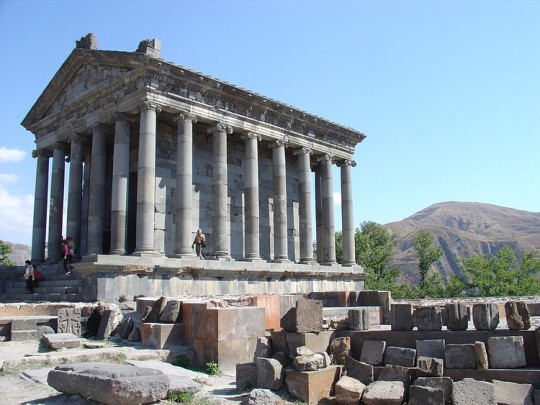
Ancient Armenia
Ancient Armenia, located in the south Caucasus area of Eurasia, was settled in the Neolithic era but its first recorded state proper was the kingdom of Urartu from the 9th century BCE. Incorporated into the Persian Empire of Cyrus the Great in the 6th century BCE, the Orontid dynasty ruled as Persian satraps, a function they performed for their next overlords the Macedonians and Seleucid Empire into the 3rd century BCE. Under the Artaxiad and Arsacid dynasties the country flourished but was often caught between the ambitions of Parthia and Rome, and then the Sasanian and Byzantine Empires. The boundaries of the state varied considerably over the centuries but such common factors as religion and language were united by long-lasting dynastic clans, which gave Armenia its own unique identity throughout antiquity.
Hayasa-Azzi (1500-1200 BCE)
The first identifiable culture in the region is the Hayasa-Azzi, an indigenous tribal confederation which flourished on the fertile plateau of ancient Armenia around Mount Ararat and parts of modern-day eastern Turkey between c. 1500 and c. 1200 BCE. The Hayasa-Azzi are the eponym of the Hay people, the term Armenians use to describe themselves and their state, Hayastan. Over time, the Hayasa-Azzi mixed with other ethnic groups and local tribes such as the Hurrians, Arme-Shupria, and Nairi, probably motivated by the need for defence against more aggressive and powerful neighbours like the Hittites and the Assyrians. They were probably infiltrated by the Thraco-Phrygians following the collapse of the Hittite Empire c. 1200 BCE. Eventually, these various peoples and kingdoms would be fused into the region's first recognisable and recorded state, the kingdom of Urartu from the 9th century BCE.
Continue reading...
102 notes
·
View notes
Text

Ceramic of man and cow from the Kingdom of Khotan 7th-9th C. CE
"The origin of the name "Hephthalites" is unknown, it may stem either from a Khotanese word *Hitala meaning "Strong", from hypothetical Sogdian *Heβtalīt, plural of *Heβtalak, or from postulated Middle Persian *haft āl "the Seven Al"
In the late 5th century CE they expanded eastward through the Pamir Mountains, which are comparatively easy to cross, as did the Kushans before them, due to the presence of convenient plateaus between high peaks. They occupied the western Tarim Basin (Kashgar and Khotan), taking control of the area from the Ruanruans, who had been collecting heavy tribute from the oasis cities, but were now weakening under the assaults of the Chinese Northern Wei dynasty. In 479 they took the east end of the Tarim Basin, around the region of Turfan.
When Khosrow I died in 579, the Hephthalites of Tokharistan and Khotan took advantage of the situation to rebel against the Sasanians, but their efforts were obliterated by the Turks."
-taken from Wikipedia
92 notes
·
View notes
Text
Language Learning Journey Update
It's been a while since I've been on Tumblr! In the months I've been away, I was focusing heavily on Persian and strengthening my skills in all areas of the language before I switch to a maintenance phase and pick up another language. During this time, I also got really into planning and journaling which has helped me better structure language learning in my schedule as well as reflect on how best to structure my time.
I certainly learned a lot from this time but the biggest takeaway for me is that my biggest pain point when learning a language is acquiring vocabulary. I tend to let it happen rather naturally (slowly) and while it's a valid method, it also leads me to stagnate and plateau. That's why, with the change in my language learning plans, I've also restructured my learning schedule (for, like, the millionth time).
Learning Two Languages Simultaneously
I was originally planning on (re)learning Korean after going through the intensive 3 months of Persian but recent developments in my professional life have pushed me to start learning Cantonese instead. My goal for Cantonese is mostly to reach a decent listening comprehension level and a basic speaking level.
Although I'm learning Cantonese from scratch, I feel that I still have a long way to go with Persian. I am not ready for a traditional maintenance phase, but I know I am close to burn out and have to dial it back. The schedule is structured around Persian and I fill the rest of the time I was using for Persian previously, for Cantonese.
ON/OFF Weeks System
This system was inspired by my need to find a different way to learn and focus on vocabulary while also avoiding burn out in Persian.
ON Weeks: These are weeks where I will be focusing on 1 skill in Persian in the mornings. For example, on Monday, I will be reading intensively (e.g., breaking down phrases, re-reading, translating, compiling vocabulary) for about 25 minutes. In the afternoons, I am working on getting exposure to Cantonese and learning the sound system.
OFF Weeks: These weeks involve only practicing the Persian vocabulary I accumulated during the ON weeks. I'll be re-reading them, defining or looking up words on Forvo, writing practice sentences, uploading them to HelloTalk, and correcting them. I also do some light, passive activities like listening while I clean something or reading for a few minutes without stopping to translate.
Off weeks don't really change much in the way of Cantonese. I will continue with my plan as is.
Maintenance languages: I do have to maintain French and Spanish, however, I am lucky that I interact with languages almost on a daily basis. When I foresee that a day may be void of one, I'll stack it with another hobby of mine (e.g., journaling in Spanish or reading in French).

An ON week coming up.
Tools pictured: Night owl by Owl Paper Co planner, Asvine P50 fountain pen, Tombow Fudenosuke hard tip brush pen, Zebra Mildliner highlighters
#the update nobody asked for#language learning#language tumblr#langblr#language blog#languages#studyblr#persian#farsi#cantonese#french#spanish#english#lang blr#language blr#vocabulary#study#i may update how things go as I start this system
32 notes
·
View notes
Text
Countries that are no more: Achaemenid Empire (550BC-330BC)
It was not the first empire of Iranian peoples, but it arose as probably the greatest in terms of influence and became the measure by which all subsequent Iranian empires tended to compare themselves and its influence on culture, government & civil infrastructure would influence others beyond the span of its territory and the span of time. This is the Achaemenid Empire.
Name: In Old Persian it was known as Xšāça or the "The Kingdom or the Empire", it was named the Achaemenid Empire by later historians. Named after the ruling dynasty established by its founder Cyrus the Great who cited the name of his ancestor Haxāmaniš or Achaemenes in Greek as progenitor of the dynasty. It is sometimes also referred to as the First Persian Empire. The Greeks simply referred to it as Persia, the name which stuck for the geographic area of the Iranian plateau well into the modern era.
Language: Old Persian & Aramaic were the official languages. With Old Persian being an Iranian language that was the dynastic language of the Achaemenid ruling dynasty and the language of the Persians, an Iranian people who settled in what is now the southwestern Iranian plateau or southwest Iran circa 1,000 BC. Aramaic was a Semitic language that was the common and administrative language of the prior Neo-Assyrian & Neo-Babylonian Empires which centered in Mesopotamia or modern Iraq, Syria & Anatolian Turkey. After the Persian conquest of Babylon, the use of Aramaic remained the common tongue within the Mesopotamian regions of the empire, eventually becoming a lingua franca across the land. As the empire spread over a vast area and became increasingly multiethnic & multicultural, it absorbed many other languages among its subject peoples. These included the Semitic languages Akkadian, Phoenician & Hebrew. The Iranian language of Median among other regional Iranian languages (Sogdian, Bactrian etc). Various Anatolian languages, Elamite, Thracian & Greek among others.
Territory: 5.5 million kilometers squared or 2.1 million square miles at its peak circa 500BC. The Achaemenid Empire spanned from southern Europe in the Balkans (Greece, Bulgaria, European Turkey) & northwest Africa (Egypt, Libya & Sudan) in the west to its eastern stretches in the Indus Valley (Pakistan) to parts of Central Asia in the northeast. It was centered firstly in the Iranian Plateau (Iran) but also held capitals in Mesopotamia (Iraq). Territory was also found in parts of the Arabian Peninsula & the Caucausus Mountains.
Symbols & Mottos: The Shahbaz or Derafsh Shahbaz was used as the standard of Cyrus the Great, founder of the empire. It depicts a bird of prey, typically believed to be a falcon or hawk (occasionally an eagle) sometimes rendered gold against a red backdrop and depicts the bird holding two orbs in its talons and adorned with an orb likewise above its head. The symbolism was meant to depict the bird guiding the Iranian peoples to conquest and to showcase aggression & strength coupled with dignity. The imperial family often kept falcons for the pastime of falconry.
Religion: The ancient Iranian religion of Zoroastrianism served as the official religion of the empire. It was adopted among the Persian elite & and had its unique beliefs but also helped introduce the concept of free-will among its believers, an idea to influence Judaism, Christianity & Islam in later centuries. Despite this official religion, there was a tolerance for local practices within the subject regions of the empire. The ancient Mesopotamian religion in Babylon & Assyria, Judaism, the Ancient Greek & Egyptian religions & Vedic Hinduism in India was likewise tolerated as well. The tolerance of the Achaemenids was considered a relative hallmark of their dynasty from the start. Famously, in the Old Testament of the Bible it was said that it was Cyrus the Great who freed the Jews from their Babylonian captivity and allowed them to return to their homeland of Judea in modern Israel.
Currency: Gold & silver or bimetallic use of coins became standard within the empire. The gold coins were later referred to as daric and silver as siglos. The main monetary production changes came during the rule of Darius I (522BC-486BC). Originally, they had followed the Lydian practice out of Anatolia of producing coins with gold, but the practice was simplified & refined under the Achaemenids.
Population: The estimates vary ranging from a low end of 17 million to 35 million people on the upper end circa 500BC. The official numbers are hard to determine with certainty but are generally accepted in the tens of millions with the aforementioned 17-35 million being the most reasonable range based on available sources.
Government: The government of the Achaemenid Empire was a hereditary monarchy ruled by a king or shah or later referred to as the ShahanShah or King of Kings, this is roughly equivalent to later use of the term Emperor. Achaemenid rulers due the unprecedented size of their empire held a host of titles which varied overtime but included: King of Kings, Great King, King of Persia, King of Babylon, Pharaoh of Egypt, King of the World, King of the Universe or King of Countries. Cyrus the Great founded the dynasty with his conquest first of the Median Empire and subsequently the Neo-Babylonians and Lydians. He established four different capitals from which to rule: Pasargadae as his first in Persia (southwest central Iran), Ecbatana taken from the Medians in western Iran's Zagros Mountains. The other two capitals being Susa in southwest Iran near and Babylon in modern Iraq which was taken from the Neo-Babylonians. Later Persepolis was made a ceremonial capital too. The ShahanShah or King of Kings was also coupled with the concept of divine rule or the divinity of kings, a concept that was to prove influential in other territories for centuries to come.
While ultimate authority resided with the King of Kings and their bureaucracy could be at times fairly centralized. There was an expansive regional bureaucracy that had a degree of autonomy under the satrapy system. The satraps were the regional governors in service to the King of Kings. The Median Empire had satraps before the Persians but used local kings they conquered as client kings. The Persians did not allow this because of the divine reverence for their ShahanShah. Cyrus the Great established governors as non-royal viceroys on his behalf, though in practice they could rule like kings in all but name for their respective regions. Their administration was over their respective region which varied overtime from 26 to 36 under Darius I. Satraps collected taxes, acted as head over local leaders and bureaucracy, served as supreme judge in their region to settle disputes and criminal cases. They also had to protect the road & postal system established by the King of Kings from bandits and rebels. A council of Persians were sent to assist the satrap with administration, but locals (non-Persian) could likewise be admitted these councils. To ensure loyalty to the ShahanShah, royal secretaries & emissaries were sent as well to support & report back the condition of each satrapy. The so called "eye of the king" made annual inspections of the satrapy to ensure its good condition met the King of Kings' expectations.
Generals in chief were originally made separate to the satrap to divide the civil and military spheres of government & were responsible for military recruitment but in time if central authority from the ShahanShah waned, these could be fused into one with the satrap and general in chiefs becoming hereditary positions.
To convey messages across the widespread road system built within the empire, including the impressive 2,700 km Royal Road which spanned from Susa in Iran to Sardis in Western Anatolia, the angarium (Greek word) were an institution of royal messengers mounted on horseback to ride to the reaches of the empire conveying postage. They were exclusively loyal to the King of Kings. It is said a message could be reached to anywhere within the empire within 15 days to the empire's vast system of relay stations, passing message from rider to rider along its main roads.
Military: The military of the Achaemenids consisted of mostly land based forces: infantry & cavalry but did also eventually include a navy.
Its most famous unit was the 10,000-man strong Immortals. The Immortals were used as elite heavy infantry were ornately dressed. They were said to be constantly as 10,000 men because for any man killed, he was immediately replaced. Armed with shields, scale armor and with a variety of weapons from short spears to swords, daggers, slings, bows & arrows.
The sparabara were the first line of infantry armed with shields and spears. These served as the backbone of the army. Forming shield walls to defend the Persian archers. They were said to ably handle most opponents and could stop enemy arrows though their shields were vulnerable to enemy spears.
There was also the takabara light infantry and though is little known of them it seems they served as garrison troops and skirmishers akin to the Greek peltast of the age.
The cavalry consisted of four distinct groups: chariot driven archers used to shoot down and break up enemy formations, ideally on flat grounds. There was also the traditional horse mounted cavalry and also camel mounted cavalry, both served the traditional cavalry functions and fielded a mix of armor and weapons. Finally, there was the use of war elephants which were brought in from India on the empire's eastern reaches. These provided archers and a massive way to physically & psychologically break opposing forces.
The navy was utilized upon the empire's reaching the Mediterranean and engaged in both battles at sea and for troop transport to areas where troops needing deploying overseas, namely in Greece.
The ethnic composition of Achaemenid military was quite varied ranging from a Persian core with other Iranian peoples such as the Medians, Sogdian, Bactrians and Scythians joining at various times. Others including Anatolians, Assyrians, Babylonians, Anatolians, Indians, Arabs, Jews, Phoenicians, Thracians, Egyptians, Ethiopians, Libyans & Greeks among others.
Their opponents ranged from the various peoples they conquered starting with the Persian conquest of the Medians to the Neo-Babylonians, Lydians, Thracians, Greeks, Egyptians, Arabs & Indians and various others. A hallmark of the empire was to allow the local traditions of subjugated areas to persist so long as garrisons were maintained, taxes were collected, local forces provided levies to the military in times of war, and they did not rebel against the central authority.
Economy: Because of the efficient and extensive road system within the vast empire, trade flourished in a way not yet seen in the varied regions it encompassed. Tax districts were established with the satrapies and could be collected with relative efficiency. Commodities such as gold & jewels from India to the grains of the Nile River valley in Egypt & the dyes of the Phoenicians passed throughout the realm's reaches. Tariffs on trade & agricultural produce provided revenue for the state.
Lifespan: The empire was founded by Cyrus the Great circa 550BC with his eventual conquest of the Median & Lydian Empires. He started out as Cyrus II, King of Persia a client kingdom of the Median Empire. His reign starting in 559BC. Having overthrown and overtaken the Medians, he turned his attention Lydia and the rest of Anatolia (Asia Minor). He later attacked the Eastern Iranian peoples in Bactria, Sogdia and others. He also crossed the Hindu Kush mountains and attacked the Indus Valley getting tribute from various cities.
Cyrus then turned his attention to the west by dealing with the Neo-Babylonian Empire. Following his victory in 539BC at the Battle of Opis, the Persians conquered the Babylonia with relative quickness.
By the time of Cyrus's death his empire had the largest recorded in world history up to that point spanning from Anatolia to the Indus.
Cyrus was succeeded by his sons Cambyses II and Bardiya. Bardiya was replaced by his distant cousin Darius I also known as Darius the Great, whose lineage would constitute a number of the subsequent King of Kings.
Darius faced many rebellions which he put down in succession. His reign is marked by changes to the currency and the largest territorial expansion of the empire. An empire at its absolute zenith. He conquered large swaths of Egypt, the Indus Valley, European Scythia, Thrace & Greece. He also had exploration of the Indian Ocean from the Indus River to Suez Egypt undertaken.
The Greek kingdom of Macedon in the north reaches of the Hellenic world voluntarily became a vassal of Persia in order to avoid destruction. This would prove to be a fateful first contact with this polity that would in time unite the Greek-speaking world in the conquest of the Achaemenid Empire. However, at the time of Darius I's the reign, there were no early indications of this course of events as Macedon was considered even by other Greek states a relative backwater.
Nevertheless, the Battle of Marathon in 490BC halted the conquest of mainland Greece for a decade and showed a check on Persia's power in ways not yet seen. It is also regarded as preserving Classical Greek civilization and is celebrated to this day as an important in the annals of Western civilization more broadly given Classical Greece & in particular Athens's influence on western culture and values.
Xerxes I, son of Darius I vowed to conquer Greece and lead a subsequent invasion in 480BC-479BC. Xerxes originally saw the submission of northern Greece including Macedon but was delayed by the Greeks at the Battle of Thermopylae, most famously by Spartan King Leonidas and his small troop (the famed 300). Though the Persians won the battle it was regarded as a costly victory and one that inspired the Greeks to further resistance. Though Athens was sacked & burnt by the Persians, the subsequent victories on sea & land at Salamis & Plataea drove the Persians back from control over Greece. Though war would rage on until 449BC with the expulsion of the Persians from Europe by the Greeks.
However, the Greeks found themselves in a civil war between Athens & Sparta and Persia having resented the Athenian led coalition against their rule which had expelled them from Europe sought to indirectly weaken the Greeks by supporting Greek factions opposed to Athens through political & financial support.
Following this reversal of fortune abroad, the Achaemenid Empire not able to regain its foothold in Europe, turned inward and focused more on its cultural development. Zoroastrianism became the de-facto official religion of the empire. Additionally, architectural achievements and improvements in its many capitals were undertaken which displayed the empire's wealth. Artaxerxes II who reigned from 405BC-358BC had the longest reign of any Achaemenid ruler and it was characterized by relative peace and stability, though he contended with a number of rebellions including the Great Satraps Revolt of 366BC-360BC which took place in Anatolia and Armenia. Though he was successful in putting down the revolt. He also found himself at war with the Spartans and began to sponsor the Athenians and others against them, showcasing the ever dynamic and changing Greco-Persian relations of the time.
Partially for safety reasons, Persepolis was once again made the capital under Artaxerxes II. He helped expand the city and create many of its monuments.
Artaxerxes III feared the satraps could no longer be trusted in western Asia and ordered their armies disbanded. He faced a campaign against them which suffered some initial defeats before overcoming these rebellions, some leaders of which sought asylum in the Kingom of Macedon under its ruler Philip II (father of Alexander the Great).
Meanwhile, Egypt had effectively become independent from central Achaemenid rule and Artaxerxes III reinvaded in around 340BC-339BC. He faced stiff resistance at times but overcame the Egyptians and the last native Egyptian Pharaoh Nectanebo II was driven from power. From that time on ancient Egypt would be ruled by foreigners who held the title Pharaoh.
Artaxerxes III also faced rebellion from the Phoenicians and originally was ejected from the area of modern coastal Lebanon, Syria & Israel but came back with a large army subsequently reconquered the area including burning the Phoenician city of Sidon down which killed thousands.
Following Artaxerxes III's death his son succeeded him but a case of political intrigue & dynastic murder followed. Eventually Darius III a distant relation within the dynasty took the throne in 336BC hoping to give his reign an element of stability.
Meanwhile in Greece, due to the military reforms and innovations of Philip II, King of Macedon, the Greek speaking world was now unified under Macedon's hegemony. With Philip II holding the title of Hegemon of the Hellenic League, a relatively unified coalition of Greek kingdoms and city-states under Macedon premiership that formed to eventually invade Persia. However, Philip was murdered before his planned invasion of Asia Minor (the Achaemenid's westernmost territory) could commence. His son Alexander III (Alexander the Great) took his father's reforms and consolidated his hold over Greece before crossing over to Anatolia himself.
Darius III had just finished reconquering some rebelling vestiges of Egypt when Alexander army crossed over into Asia Minor circa 334BC. Over the course of 10 years Alexander's major project unfolded, the Macedonian conquest of the Persian Empire. He famously defeated Persians at Granicus, Issus and Gaugamela. The latter two battles against Darius III in person. He took the King of Kings family hostage but treated them well while Darius evacuated to the far eastern reaches of his empire to evade capture. He was subsequently killed by one of his relatives & satraps Bessus, whom Alexander eventually had killed. Bessus had declared himself King of Kings though this wasn't widely recognized and most historians regard Darius III, the last legitimate ShahanShah of Achaemenids.
Alexander had taken Babylon, Susa & Persepolis by 330BC and effectively himself was now ruler of the Persian Empire or at least its western half. In addition to being King of Macedon & Hegemon of the Hellenic League, he gained the titles King of Persia, Pharaoh of Egypt & Lord of Asia. Alexander would in time eventually subdue the eastern portions of the Achaemenid realm including parts of the Indus Valley before turning back to Persia and Babylon where he subsequently became ill and died in June 323BC at age 32. Alexander's intentions it appears were never to replace the Achaemenid government & cultural structure, in fact he planned to maintain and hybridize it with his native Greek culture. He was in fact an admirer of Cyrus the Great (even restoring his tomb after looting) & adopted many Persian customs and dress. He even allowed the Persians to practice their religion and had Persian and Greeks start to serve together in his army. Following his death and with no established successor meant the empire he established which essentially was the whole Achaemenid Empire's territory in addition to the Hellenic world fragmented into different areas run by his most trusted generals who established their own dynasties. The Asian territories from Anatolia to the Indus (including Iran and Mesopotamia) gave way to the Hellenic ruled Seleucid Empire while Egypt became the Hellenic ruled Ptolemaic Kingdom. The synthesis of Persian and Greek cultures continued in the Seleucid and Greco-Bactrian kingdoms of antiquity.
The Achaemenid Empire lasted for a little over two centuries (550BC-330BC) but it casted a long shadow over history. Its influence on Iran alone has persisted into the modern age with every subsequent Persian Empire claiming to be its rightful successor from the Parthian & Sasanian Empires of pre-Islamic Iran to the Safavids of the 16th-18th century and the usage of the title Shah until the last Shah's ejection from power in the 1979 Islamic Revolution. Even the modern Islamic Republic of Iran uses Achaemenid imagery in some military regiments and plays up its importance in tourism and museums as a source of pride to Persian (Farsi) & indeed Iranian heritage. Likewise, its form of governance and the pushing of the concept of divine rights of kings would transplant from its Greek conquerors into the rest of Europe along with various other institutions such as its road & mail system, tax collection & flourishing trade. Its mix of centralized & decentralized governance. Its religious & cultural tolerance of local regions even after their conquest would likewise serve as a template for other empires throughout history too. The Achaemenid Empire served as a template for vast international & transcontinental empires that would follow in its wake & surpass its size & scope of influence. However, it is worth studying for in its time, it was unprecedented, and its innovations so admired by the likes of Alexander the Great and others echo into the modern era.
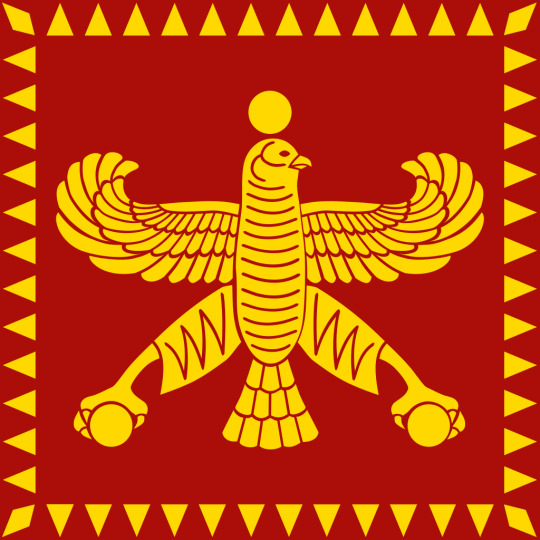
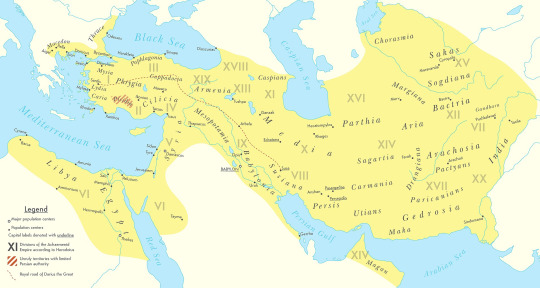


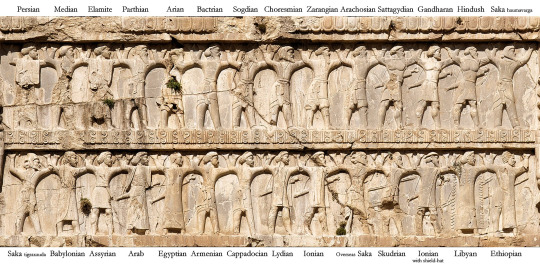
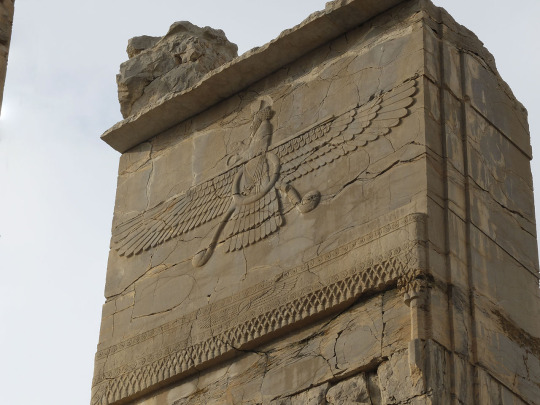




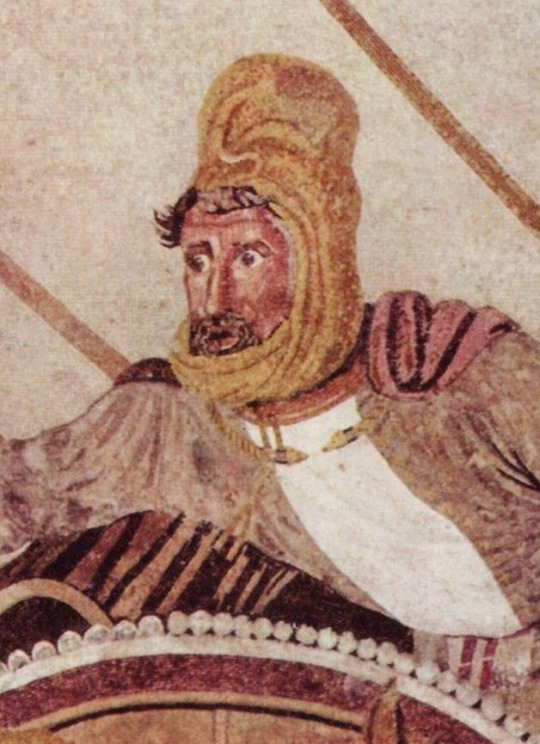
#military history#antiquity#iran#greece#ancient greece#classical greece#ancient ruins#ancient iran#ancient persia#achaemenid#persia#zoroastrianism#alexander the great#cyrus the great#xerxes#artwork#government#history#persian empire#ancient egypt
89 notes
·
View notes
Text

New SpaceTime out Wednesday....
SpaceTime 20240410 Series 27 Episode 44
New Clues About Mars’ Ancient Water
NASA’s Mars Curiosity rover has arrived at an area in Gale Crater’s Mount Sharp that may show evidence liquid water flowed on the red planet for much longer than previously thought.



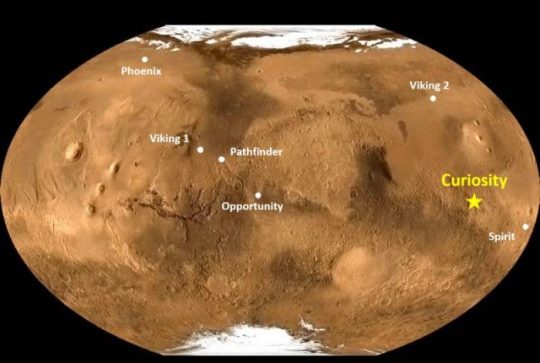
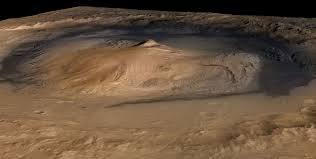

NASAs new Moon buggies
NASA has selected three companies to help it develop its proposed new Moon buggy --- the lunar terrain vehicle or LTV.




The largest digital camera ever built for astronomy
After two decades of work, scientists and engineers at the US Department of Energy's Stanford Linear Accelerator Centre’s National Accelerator Laboratory have finally completed the Legacy Survey of Space and Time Camera -- The largest digital camera ever built for astronomy.
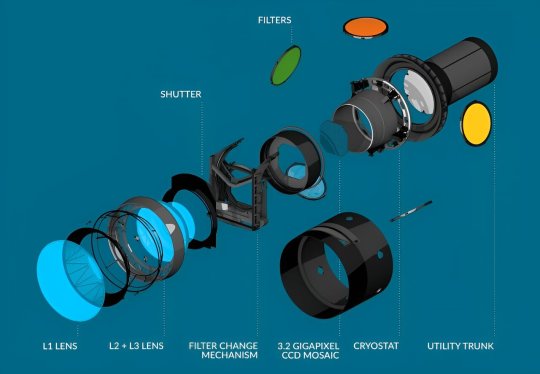




The Science Report
A new study shows that high blood pressure is the leading risk factor for death.
The Persian Plateau identified as pivotal for Homo sapiens migration out of Africa.
Volcanoes could hold the clues to how the first building blocks of life were formed.
Alex on Tech more controversy for Google
SpaceTime covers the latest news in astronomy & space sciences.
The show is available every Monday, Wednesday and Friday through Apple Podcasts (itunes), Stitcher, Google Podcast, Pocketcasts, SoundCloud, Bitez.com, YouTube, your favourite podcast download provider, and from www.spacetimewithstuartgary.com
SpaceTime is also broadcast through the National Science Foundation on Science Zone Radio and on both i-heart Radio and Tune-In Radio.
SpaceTime daily news blog: http://spacetimewithstuartgary.tumblr.com/
SpaceTime facebook: www.facebook.com/spacetimewithstuartgary
SpaceTime Instagram @spacetimewithstuartgary
SpaceTime twitter feed @stuartgary
SpaceTime YouTube: @SpaceTimewithStuartGary
SpaceTime -- A brief history
SpaceTime is Australia’s most popular and respected astronomy and space science news program – averaging over two million downloads every year. We’re also number five in the United States. The show reports on the latest stories and discoveries making news in astronomy, space flight, and science. SpaceTime features weekly interviews with leading Australian scientists about their research. The show began life in 1995 as ‘StarStuff’ on the Australian Broadcasting Corporation’s (ABC) NewsRadio network. Award winning investigative reporter Stuart Gary created the program during more than fifteen years as NewsRadio’s evening anchor and Science Editor. Gary’s always loved science. He studied astronomy at university and was invited to undertake a PHD in astrophysics, but instead focused on his career in journalism and radio broadcasting. He worked as an announcer and music DJ in commercial radio, before becoming a journalist and eventually joining ABC News and Current Affairs. Later, Gary became part of the team that set up ABC NewsRadio and was one of its first presenters. When asked to put his science background to use, Gary developed StarStuff which he wrote, produced and hosted, consistently achieving 9 per cent of the national Australian radio audience based on the ABC’s Nielsen ratings survey figures for the five major Australian metro markets: Sydney, Melbourne, Brisbane, Adelaide, and Perth. The StarStuff podcast was published on line by ABC Science -- achieving over 1.3 million downloads annually. However, after some 20 years, the show finally wrapped up in December 2015 following ABC funding cuts, and a redirection of available finances to increase sports and horse racing coverage. Rather than continue with the ABC, Gary resigned so that he could keep the show going independently. StarStuff was rebranded as “SpaceTime”, with the first episode being broadcast in February 2016. Over the years, SpaceTime has grown, more than doubling its former ABC audience numbers and expanding to include new segments such as the Science Report -- which provides a wrap of general science news, weekly skeptical science features, special reports looking at the latest computer and technology news, and Skywatch – which provides a monthly guide to the night skies. The show is published three times weekly (every Monday, Wednesday and Friday) and available from the United States National Science Foundation on Science Zone Radio, and through both i-heart Radio and Tune-In Radio.
#science#space#astronomy#physics#news#nasa#esa#astrophysics#spacetimewithstuartgary#starstuff#spacetime#galaxy#nasa photos#jwst
10 notes
·
View notes
Text
basiji are the Iranian morality police
it's incredible to see Iranians go from terrified obeisance to them and now public acts of revenge
The Jina Amini rebellion has not ended-- in many areas, women are more free to choose to wear a hijab or not and "improper hijab" is significantly less likely a risk of injury, imprisonment, torture, or death.
That said, it was within the past year that a woman was brutalized by basiji for having a loose chador & oppressed Iranians like Kurds (such as Jina Amini herself), Balochs, and Afghans are significantly less safe from police harassment if they were to wear a loose chador than Persians.
The Iranian plateau is not free until it is free for all Iranian peoples.
Every act against the regime & its enforcers is a step towards that.
Jin, jiyan, azadi.
ACAB.
6 notes
·
View notes
Text
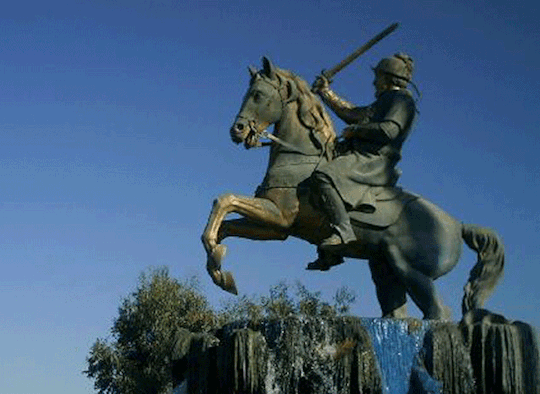


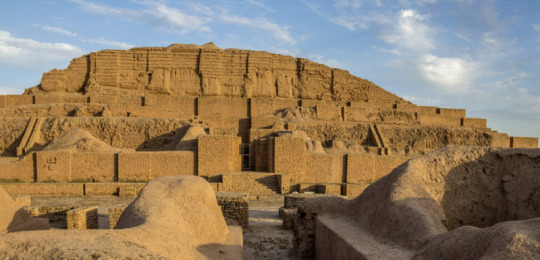
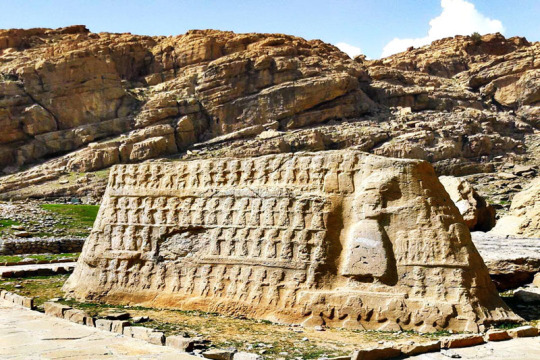
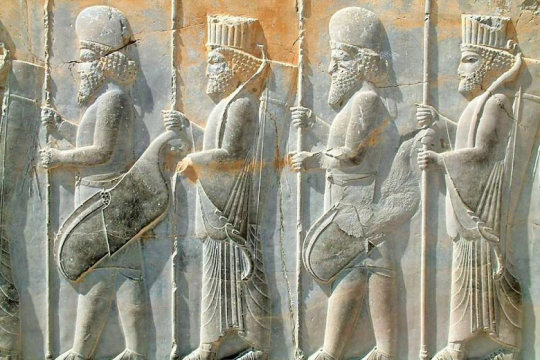
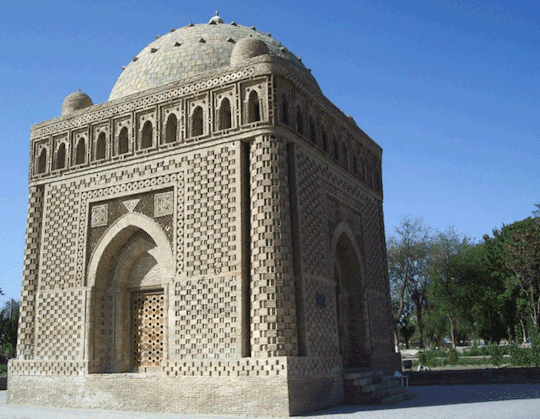


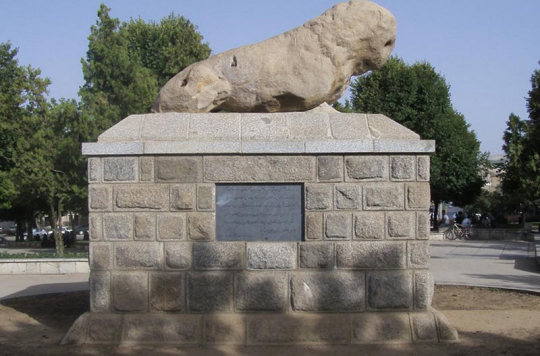
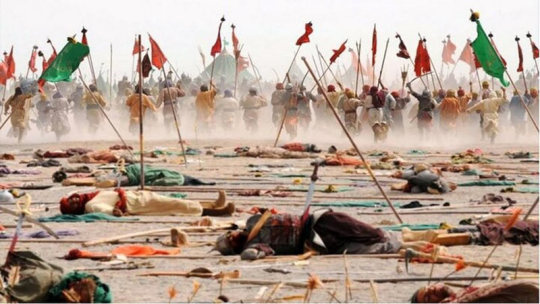
Who was the founder of the first central government in Iran?
The founder of the first central government in Iran dates back to the Achaemenid period by Cyrus the Great. Achaemenid Cyrus was crowned in 550 BC and established the first central government in Iran.
The origin of the name Iran
The country of Iran was not called "Iran" from the beginning and was known by the names of Persia, Pars and Pers among others. Saeed Nafisi suggested the word "Iran" instead of "Persia" in January 1313 AH. The naming initially caused opposition. Because the politicians considered "Persia" as an international name that was familiar among all types. The supporters of this naming also considered the term "Iran" as the best name to describe the political authority and cultural background of this country.
In 1314 AH, based on the circular of the Ministry of Foreign Affairs of Iran and the request of the then government of Reza Shah, the word "Iran" was officially used to name the country and replace other names. Professor Arthur Upham Pope, an American Iranologist, writes in the book Masterpieces of Iranian Art translated by Parviz Natal Khanleri:
The word "Iran" was used for the plateau and geographical functions of Iran in the first millennium BC.
According to Mohammad Moin, the great Iranian writer, the origin of the word "Arya" is so clear that the eastern part of Indo-Europe considers themselves proud of this name. Indo-Iranian common ancestors also introduced themselves with this name and named their country as "Iran-Oejah".
Pre-Islamic era in Iranian history
The pre-Islam era, which includes various events in the history of Iran, includes the time period before the arrival of the Aryans, that is, the rule of Elam until the end of the Sassanid rule and the arrival of the Arabs in Iran. According to historical sources, before the Aryans entered Iran, the Elamites lived as a native dynasty in the Iranian plateau.
The Elam dynasty was formed in the southwestern region of the Iranian plateau around 3,000 years BC, and they named their territory "Hatmati". The rule of Elam expanded during the period of the famous kings of this dynasty, and they dominated parts of Mesopotamia (Mesopotamia) in addition to southwestern Iran.
Whenever the Elamites gained more power, they played an important role in the Middle River politics. They overcame Sumer around 2,000 BC and completely subjugated the Mesopotamia. Historians divide the political history of Elam into three periods:
Ancient Elam, Middle Elam and New Elam
The migration of Aryans to the Iranian plateau
In the third period of the rule of Elam, the Medes, as a group of Aryans, established their power in the northwest of Iran and took control of that part of Iran. The Parthians (Ashkanians) and the Persians (Achaemenians and their successors, who were called the Sasanians) were two other Aryan tribes who formed a government in the Iranian plateau after the Medes.
There are many theories about the ethnicity, race and migration of Aryans and their entry into Iran, which are the source of disagreement among scholars and have not yet reached a single conclusion about them. Some consider Siberia as the origin of Aryans and believe that they entered the Iranian plateau from there.
The post-Islam era in Iranian history
Yazdgerd III, the last Sassanid king, was defeated by the Arabs and left Iran to them. "Rostam Farrokhzad" was defeated by the Arabs in the battle of Qadisiyah (636 AD) and lost his life despite his bravery. He organized his forces and was defeated by the Arabs in the war that took place in Nahavand (642 AD). Yazdgerd fled to the East with his family and was killed near Merv. With the death of Yazdgerd III, his empire fell in 651 AD.According to the book "Two Centuries of Silence" by "Abd al-Hossein Zarinkoub", some Iranians were not satisfied with the arrival of Arabs in the country and continued to adhere to the Zoroastrian religion. Zoroastrian Iranians paid tribute to music during this period. According to Zarinkoob, Iranians do not accept Islam with open arms and during this time, they were fighting with the Arabs in the corners and sides of Iran in order to advance them. On the other hand, Shahid Motahari criticized Zarinkoub in his book "Mutual Services of Islam and Iran" and did not consider his opinion to be scientific. He believes that Iranians accepted Islam with open arms.
The land of Iran gradually surrendered to the Arabs and only Tabaristan and Gilan maintained their independence by resisting. During this period, government powers did not rule in Iran and local governments have power in some parts of Iran.
The domination of Arabs over Iran caused their culture to be revealed in Iran, and with the beginning of independent Islamic governments in Iran, the Hijri lunar calendar, the foundations of historians in writing the history of Iran, was published.
contemporary history
World War II brought chaos to Iran and Reza Shah resigned from the throne. Mohammad Reza succeeded his father in 1320 AH (1941 AD). The creation of the 14th Parliament, the nationalization of the oil industry, the withdrawal of Soviet forces from Iran after the end of World War II, the August 28 coup, the Baghdad Pact, and the formation of the Iranian National Front were among the most important events of this period.
With the formation of the Islamic Revolution in 1357 AH (1978 CE), the life of Pahlavi rule ended and the Islamic Republic replaced it.
11 notes
·
View notes
Text
Well, I think the situation around the perception of iranian history and greek history in fandom is quite similar.
Let's be honest, for most people there is only Ancient Greece (by which they mean the history of the classical greek city-states + hellenistic period + roman period, we are not particularly touching on the dark ages and bronze age Mycenaean Greece, not to mention earlier times), which they - following the manga/anime canon - separate from modern Greece. And there is modern Greece, which, in general, began its independent existence in the first half of the nineteenth century, when a small piece of territory in the southern Balkans gained independence and was called “Hellas”. At best, they have ottoman rule as a kind of “preparatory period” when the canonical Iraklis grew up, did not understand anything and did not really decide anything. And at the same time, modern Greece is the son of Ancient Greece, who loves to be nostalgic about his cool mother, who did something great there more than two thousand years ago. Cool, yeah.
Likewise, for most people there is "ancient Persia" (before the conquest of the Islamic Caliphate in the 7th and 8th centuries AD) and "modern Iran", which they count from the Islamization of the Iranian plateau. In the manga canon, we have a character called "Persia", who people unthinkingly identify with the Achaemenid state, the Parthian Arsacid state, and the Sassanid state. In fanon, he (“Persia”) actively interacts (at war) with Rome, interacts with China and India in much rarer cases, and the mangaka also mentioned that he has descendants, one of which is “modern” Iran, yes. And, of course, there is an incredible amount of time devoted to the Achaemenid period (but not the greco-persian Wars, which shocked me when researching the fandom). Cool, yeah.
But you know what's surprising? None of this makes any sense.
If we take Greece... no, we take greek culture, we will understand that it has continuously developed, without gaps, from the time of the classical polis until the present moment, BUT, if you really want to find a watershed, then this is late antiquity. Why? Because in late antiquity, the pagan hellenes, living in their separate city-states as citizens, became christian rhomeans, subjects of the vast Eastern Roman Empire (which in fact is still perceived as a Republic). The roman "imperial" identity replaced the greek polis identity - although the greek language still dominated in the East, especially after the Avar conquest of the Balkans, when the Empire lost the latin-speaking provinces. The perception of “hellenic” identity was very complex, it experienced a revival, especially in the 13th century, when the roman/latin identity began to be associated with the germans/italians/franks, enemies of the Eastern Empire, but this is if we are talking about intellectuals - the people considered themselves rhomeans. And guess what? The conquest of Constantinople in 1453 did not change anything! There was no break or fracture! The Church of Constantinople continued to be the guardian of this identity even in the absence of christian imperial power! And the people who started the Greek Revolution in the 19th century did not strive to create a small national state, no, in their eyes ALL of Anatolia and the Balkans were the historical lands of the Eastern Roman Empire, which they considered their country. The fascination with ancient pagan Greece is something that was brought from the West, which despised “Byzantium”.
And if you look at Iran, the real boundary between "ancient" and "modern" history is the conquest of Alexander the Great. Because - this will amaze many - but until the second half of the 19th century in Iran itself they knew nothing about the ancient history of the country! The first historical event preserved in chronicles and art, say, the "Shahnameh" of Ferdowsi, is the conquest of Alexander, which has nothing to do with the real one (I will only say that Alexander is considered a descendant of the iranian royal dynasty there). In Iran, they knew almost nothing about the greco-persian wars, about the Seleucids, about the parthian Arsacids and the roman-parthian wars! The real history in Iranian perception began only with the Sassanids, who were at enmity with “Rum” - but, first of all, not with Western, decrepit Rome, but with Eastern Rome! It was “Byzantium” that was “Rome” for the Iranians and for the entire Middle East until the 19th century, while the Western “latins” were the “franks”. Moreover, I want to note that the complete forgetting of the history of the country before Alexander in Iran began even under the Sassanids - largely because ancient persian was a cuneiform language, and cuneiform was forgotten (as for the iranian epic, its oldest part is eastern iranian in origin, western iranian, persian, it becomes only from the time of Ardashir the First). But the arab conquest and adoption of islam did not have such consequences! And when the revival of iranian culture and the new persian language began in the 9th-10th centuries A.D., it was a revival, albeit rethought, of Sassanian identity.
In short, while it makes sense to separate Ancient Greece from "Byzantium", it makes no sense to separate "Byzantium" from modern Greece. And the history of modern Iran begins with the Sassanids, not Islamization.
#hetalia meta#hetalia#aph#hws#aph greece#hws greece#aph byzantine empire#hws byzantine empire#aph persia#hws persia#aph iran#hws iran
14 notes
·
View notes
Text
this is so interesting
"At the same time the Persians also employed an entirely different system of irrigation, especially in the dry internally draining basins of the Iranian Plateau. This latter system involved the use of long underground channels or qanats. A qanat consists of a gently sloping tunnel that starts at the bottom where water is needed and extends back towards higher ground where the tunnel taps into water-bearing strata. Water is then conducted by gravity flow, where it seeps into the upper end of the tunnel, to an outlet and an irrigation canal at the lower end. Viewed from the air, the most distinctive feature of a qanat is the alignment of its ventilation shafts, each of which is surrounded by earth that was removed in the course of its construction and maintenance; with this system fresh cool mountain water could be brought straight to a settlement, garden or field. In addition, such long underground channels reduced the loss of precious water through evaporation. The Achaemenid Persians are thought to have introduced the qanat into the western and southern oases of Egypt (under Darius c.490 BC) where its employment substantially enlarged the areas that could be cultivated."
(gardens and gardeners of the ancient world, linda farrar)
youtube
15 notes
·
View notes
Text
Starting this over lol
I should've been below 200 lbs by mid November 2023, but I hit a rough patch and started drinking too much and not counting my calories, so I was plateauing between 206-209 throughout October-December.
Sucks.
But I haven't drank in over a month, and I'm at about 203-204 lbs past couple days. I'm annoyed that I let myself down for a few months, but I'm glad I at least didn't really gain. My goal for drinking is to give my system at Least a 2 month break, but even longer if I feel like it (I'll probably go out for my birthday at the end of the 2 months, but then resume Not Drinking). I'm hoping that this will just eventually develop into a normal habit and I'll only drink on occasion.
I think this has been easier for me to stick to since my partner finally got a job. A lot of my stress has been slowly diminishing because of this, resulting in me not craving vice as intensely (self control is great !)
Still focusing a lot on eating plenty of veg, which hasn't been hard. But it has been hard to get a good amount of protein since I mostly eat pescatarian, and quality meat is really expensive these days.
I tried out these tinned herring from Aldi that come in 3 different sauces. They're a bit too sweet and a tad high in sodium, but they're very convenient and have good protein.
I did buy some ground beef from the co-op (their lamb was waaaay too expensive), so I'm gonna make some Persian kebabs/rice and roasted veg/salad tomorrow.

I've just been tracking everything in a spreadsheet that looks like this.
Feel like I ate pretty good today (TDEE is just under 2100), and went on a nice, brisk 2.3 mile walk to the co-op.
Got a couple ice creams (mostly for my partner, who has a big sweet tooth), so I'll probably try a little bit of the honey, blueberry, lavender flavor I picked out when my partner gets home from work.

2 notes
·
View notes
Text
"persian"/"iranian" nation-building (from vatan-archaic to vatan-contemporary) was both a nigh-inevitable event in the resistance of the "iranic" (broadly construed) plateau to encroaching european influence and a phase transition leading to the latest state of violent imperialism in the region. for all the francophilia of the late 19th/early 20th century iranian intelligentsia, you can oppose this europhobic nation-building to the pointed westernization project taken on by kemal and the young turks—and despite that difference, both were doors with a renewed and vicious nationalistic imperialism on the other side. squeeze out one contradiction for another. anyway, marg bar... well, you know. right?
13 notes
·
View notes
Photo
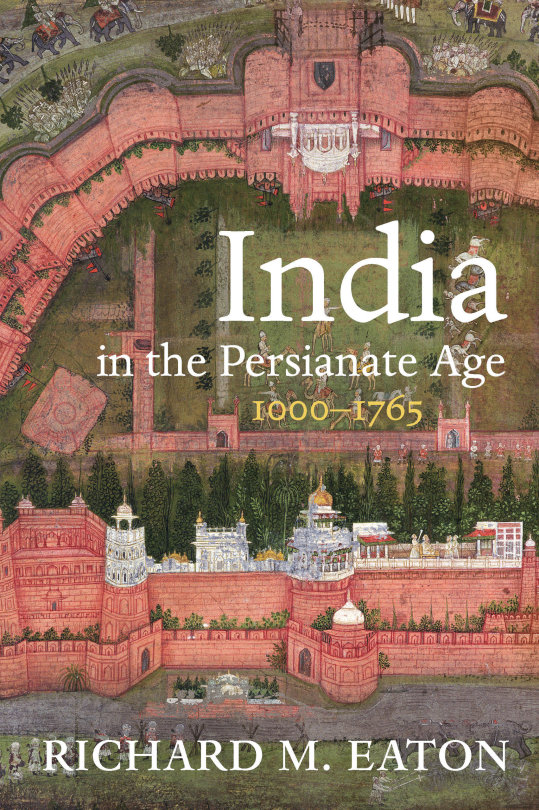
India in the Persianate Age: 1000-1765
Richard Eaton’s India in the Persianate Age: 1000-1765 represents a paradigm shift in the study of Indian history. It debunks the stereotypical interpretation of medieval India, first championed by the British and later by Indian ultranationalists, as one of Hindu-Muslim conflict and backwardness. Eaton argues that far from being a period of religious sectarianism, conflict, and decline, India under the Turkic and Mughal rules represented a period of intense engagement, assimilation, and growth. Sultan Mahmud of Ghazni’s invasions beginning in 1000 CE introduced the Persianate culture to India. This book analyzes this period in the context of a new Persianate culture that grew out of the interaction with Arab Islam and pre-Islamic Iranian traditions and then served as a cultural umbrella across a huge swath of the Iranian plateau and Central Asia.
According to Eaton, the Persianate culture crossed paths with Sanskrit Cosmopolis.
According to Eaton, the Persianate culture crossed paths with Sanskrit Cosmopolis, a transregional culture based on Sanskrit canons that had spread through much of South and Southeast Asia. The overlap of these two traditions brought about far-reaching changes in South Asian political, social, and cultural life. India became the principal center of producing Persian works, including dictionaries and the first major anthology of Persian poetry. By the 14th century, Persian had become the most widely used language for governance across South Asia as Indians came to fill the vast revenue and judicial bureaucracies.
Continue reading...
40 notes
·
View notes
Text
The Gando creatures -- the westernmost population of mugger crocodiles in Iran -- are a last outpost, bordering a “no-man’s land” without crocodiles stretching between southeastern Iran and the Nile crocodiles of Egypt. Muggers (Crocodylus palustris), the iconic freshwater crocodile of South Asia, are now extinct within Myanmar, Bhutan, and, likely, Bangladesh. There are about 500 muggers still surviving within Iranian borders, with a few also surviving in southern Pakistan; they are in unique peril, compared to the healthier muggers in India and Sri Lanka, given local drought conditions. Following the highly-publicized disappearance of the Zayandeh-Roud river in the metropolitan and cultural center of Isfahan, in late 2021, drought continues to endanger riparian corridors across Iran. But good news: Muggers continue to appear in drought-stricken Iranian refugia and in habitat near major metro areas near Pakistan’s Indus mouth.
From 29/30 July 2022, at Thatta, near Haleji Lake between Karachi and Islamabad:

-------
From 16 January 2022, in Iran.
Excerpt:

One would not usually associate Iran and its snow-clad mountains, arid deserts, high plateaus, lush green Hyrcanian forests and the Persian Gulf coast with crocodiles. But Sistan and Baluchestan, the country’s second-largest province by area, that borders Pakistan and Afghanistan, is home to the animals. [...] The BBC December 28, 2021 described how conflict had increased between crocodiles and humans in Sistan-Baluchestan due to extreme scarcity of water. Asghar Mobaraki, Iran’s foremost expert on crocodiles, noted in an academic article last year:
The (crocodile) population in southeastern Iran remains severely vulnerable to extreme climatic events, such as periodic droughts and floods. Iranian crocodiles are therefore directly impacted by climate change and are in critical need of immediate study to evaluate this threat. [...]
The province is home to the Baloch people, who make up the majority and overlap into the neighbouring Balochistan province of Pakistan. The province is also home to Chabahar on the Persian Gulf, where India is building a huge port. [...]
“The crocodile found in Iran is the same species that is present throughout the Indian subcontinent, the mugger crocodile or Crocodylus palustris. Regional differences are possible, depending on factors such as resource availability,” Sideleau said.
He noted:
The Iran muggers represent the westernmost population of mugger crocodiles and the westernmost population of crocodiles before you reach the Nile crocodile (Crocodylus niloticus) in Africa. There is a “no man’s land” with no crocodilian species from Iran to Egypt, where Nile crocodiles are currently found in Lake Nasser, the reservoir created by the Aswan High Dam. This “no man’s land” is almost certainly due to the aridity of the region and the lack of habitat.
“Crocodiles in Sistan-Baluchestan are known by the Balochi term ‘Gando’, meaning ‘moving on a belly’,” Mobaraki told DTE.
“We estimated that there are 500 gandos in Iran currently, almost all of them in Sistan-Baluchestan,” Mobaraki said.
“An estimated 500 wild muggers remain within the southeastern part of Iran, in Sistan and Baluchestan Provinces (the Gandou Protected Area). They occupy ponds along two large rivers, namely Bahu-Kalat and Kaju, two dam reservoirs (Pishin and Zirdan), small artificial water dams, and some manmade local ponds in villages,” the article written by Mobaraki last year, noted.
He agreed with Sideleau’s view that the gandos of Iran were scientifically considered to be the same as the muggers of the Indian subcontinent. “But the Iranian populations are in an extreme habitat. Hence, they seem to be a bit polymorphically different. They are smaller than their Indian relatives,” Mobaraki said.
Iran had been in the news over climate change in November 2021, when the residents of Isfahan, the country’s third-largest city, had clashed with authorities over the ‘disappearance’ of the city’s river, the Zayandeh-Roud. [...] The Iran Meteorological Organization has estimated that some 97 per cent of the country is dealing with drought at some level, according to media reports.
-------
The preceding headling, image, caption, and text excerpt were published by: Rajat Ghai. “Yes, there are crocodiles in Iran and they are in trouble due to climate change.” DownToEarth. 16 January 2022.
The other two species of crocodilian in South Asia are the saltwater crocodile and the unique gharial. The saltwater crocodile has been eliminated throughout most of its Indian/South Asian distribution range, while the gharial has been driven to extinction in Pakistan, Bangladesh, and Bhutan and now only lives in a couple of specific river systems in Nepal and the Ganges corridor of India. Though now apparently locally extinct in Myanmar, Bangladesh, and Bhutan, small populations of muggers persist in Pakistan and Iran. Former historical distribution range and current distribution range:
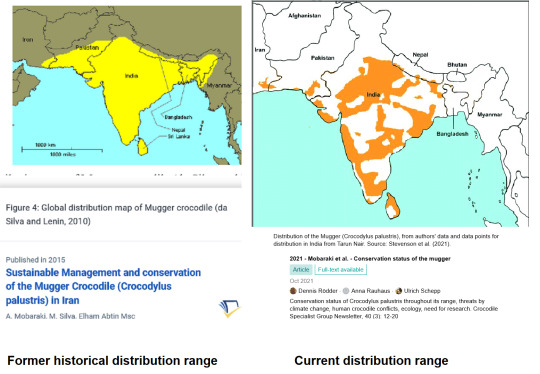
18 notes
·
View notes
Text
Nordic Ark: An Animal conservation in Sweden
Who wants to see pictures of animals because here's a bunch of them. All of these animals are in various states of endangerment but are on the rise thanks to places like this.

Here's a European ground squirrel. His ears are so tiny.
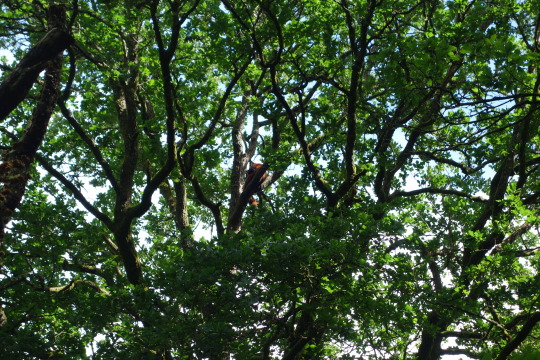
This is the clearest shot I could get of this red panda. He's sitting ~70+ft up without a care in the world.
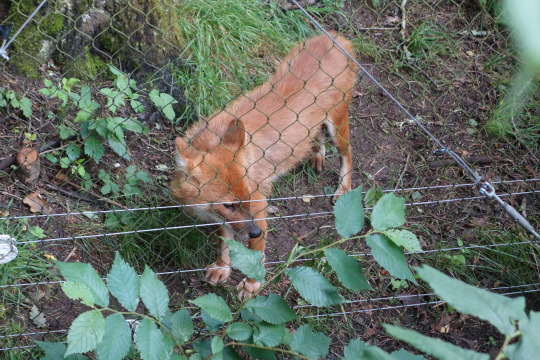
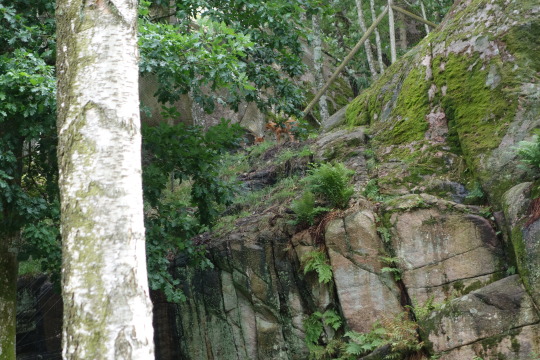
This is the Asian Wild Dog, also known as a Dhole. These are the best two pictures that I got. I only just noticed the second one in the second picture.
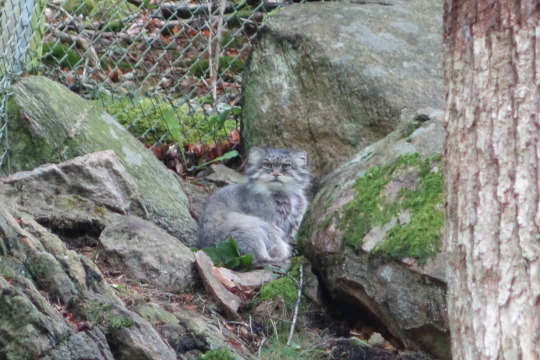
Here's a Pallas cat. These guys are found in the high elevations of Central Asia's plateaus. Compared to a normal cat, this cat feels even more fed up with humans.
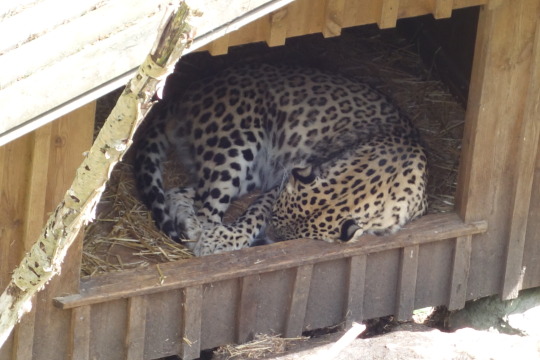
Persian leopard. Isn't he just the cutest cat that could eat your face off? Yes he is!

Here's an Eurasian eagle owl. I got this perfect shot as the sun reappeared for a few seconds.

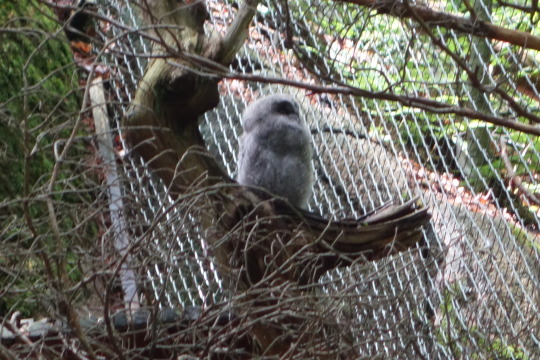
Here's an adult and baby Great Gray owl. That is one big bird!

It's a Lynx! This cat could not sit still for longer than 2 seconds.

Here's a white backed woodpecker cleaning under it's wing.

And I'll end this post with a Maned Wolf. It's as tall as it is long which makes for one leggy boi.
4 notes
·
View notes